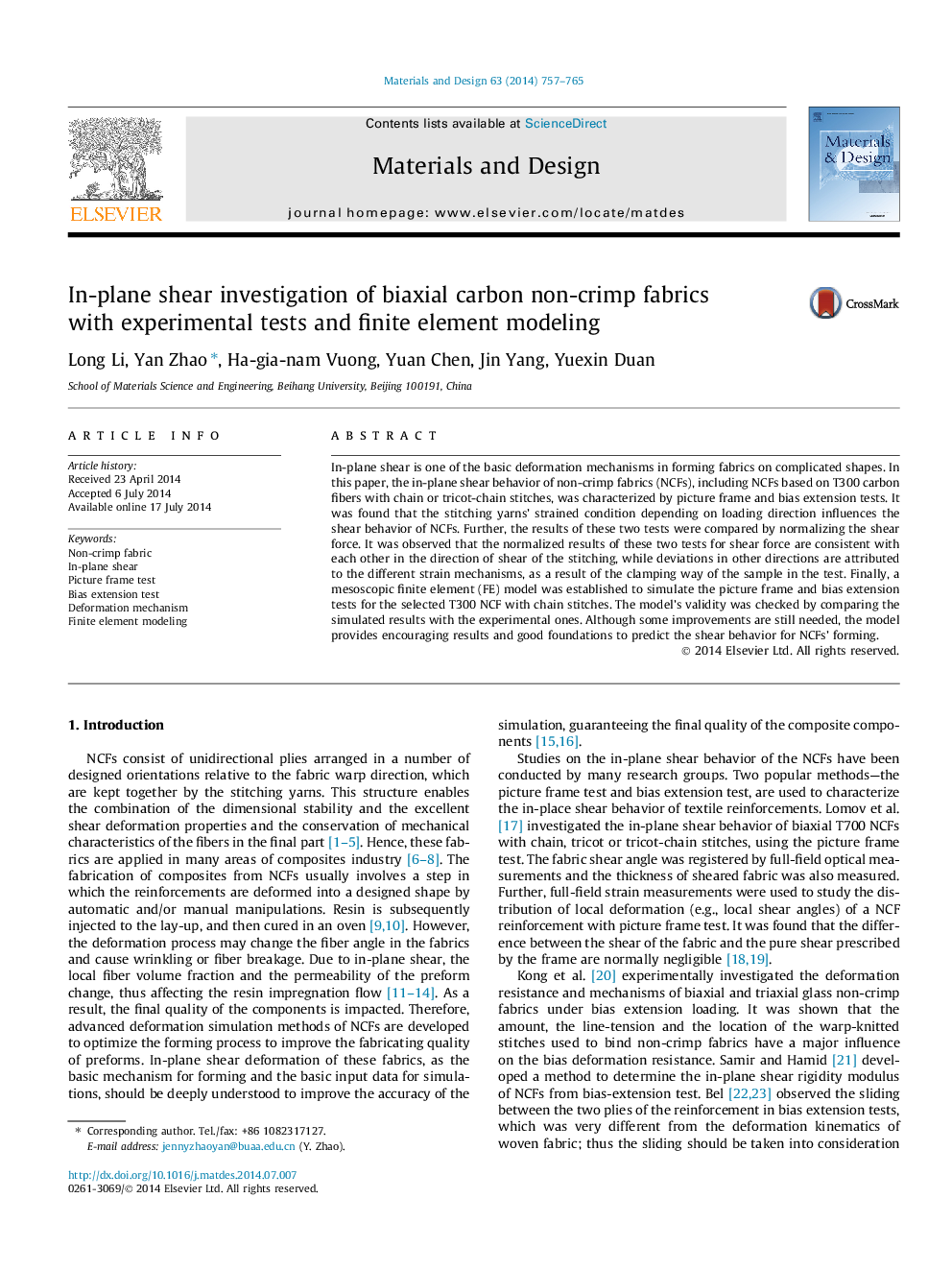| Article ID | Journal | Published Year | Pages | File Type |
|---|---|---|---|---|
| 829060 | Materials & Design (1980-2015) | 2014 | 9 Pages |
•In-plane shear behavior of NCFs is characterized by picture frame and bias extension.•Shear behavior in the two tests is compared after normalizing the results.•Deformation mechanisms of NCFs are influenced by the stitches’ strain condition.•A mesoscopic finite element model precisely predicts the in-plane shear behavior.
In-plane shear is one of the basic deformation mechanisms in forming fabrics on complicated shapes. In this paper, the in-plane shear behavior of non-crimp fabrics (NCFs), including NCFs based on T300 carbon fibers with chain or tricot-chain stitches, was characterized by picture frame and bias extension tests. It was found that the stitching yarns’ strained condition depending on loading direction influences the shear behavior of NCFs. Further, the results of these two tests were compared by normalizing the shear force. It was observed that the normalized results of these two tests for shear force are consistent with each other in the direction of shear of the stitching, while deviations in other directions are attributed to the different strain mechanisms, as a result of the clamping way of the sample in the test. Finally, a mesoscopic finite element (FE) model was established to simulate the picture frame and bias extension tests for the selected T300 NCF with chain stitches. The model’s validity was checked by comparing the simulated results with the experimental ones. Although some improvements are still needed, the model provides encouraging results and good foundations to predict the shear behavior for NCFs’ forming.
